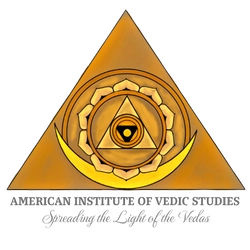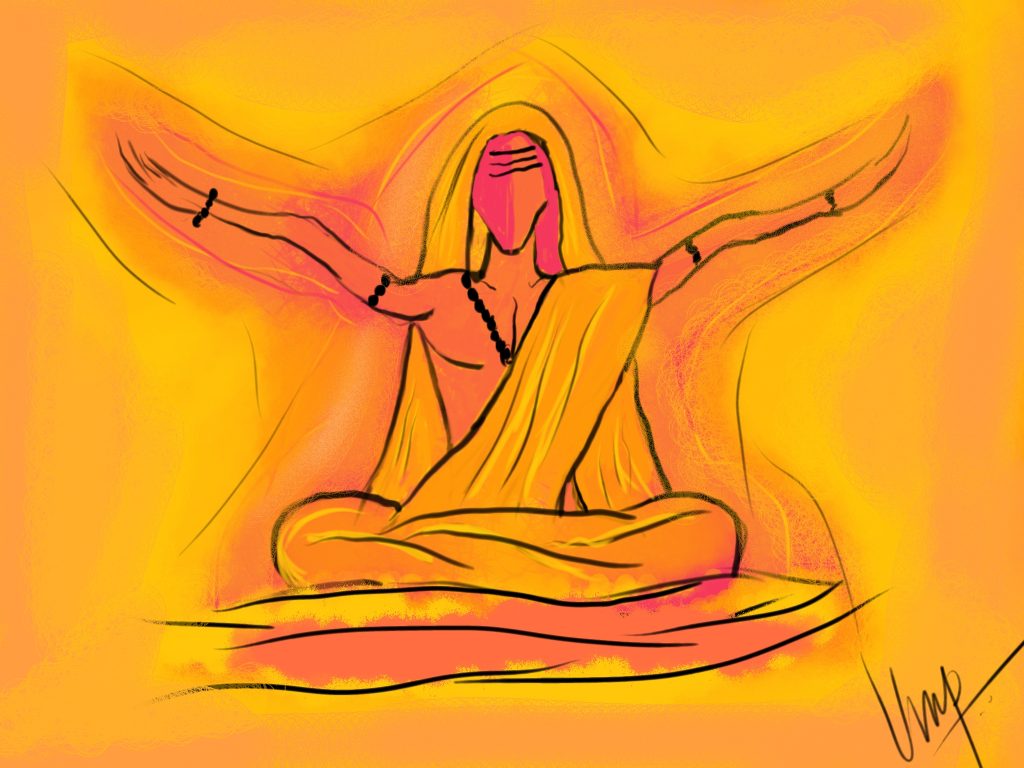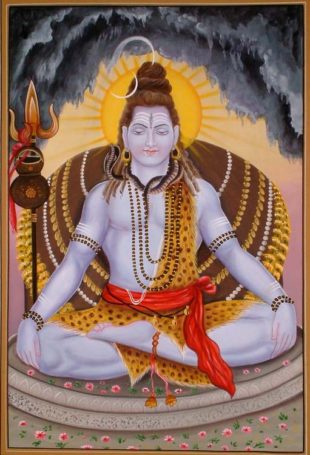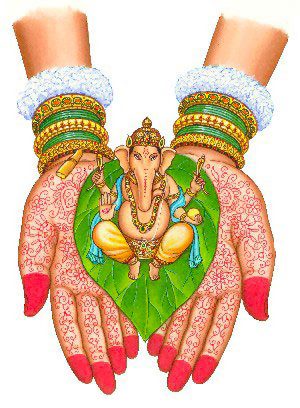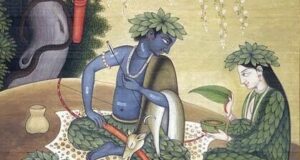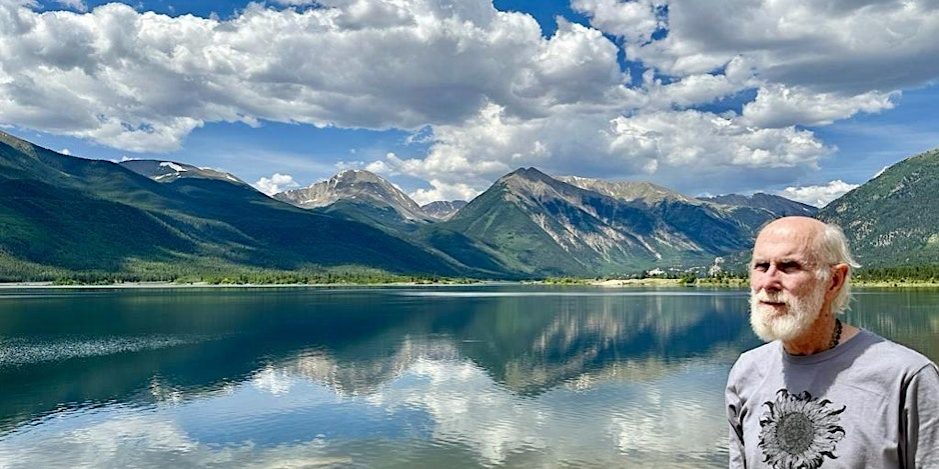![]() Shankara, the Great Yogi
Shankara, the Great Yogi
Shankaracharya, or Adi Shankara the teacher, is one of the greatest spiritual masters in the history of India. Shankara has often been called the greatest philosopher of India, if not of all time and of the entire world. His teaching is highly rational, clear and concise, as well deeply mystical, unfolding all the mysteries of Self, God, the universe, the Absolute and immortality, with subtle meditative examinations of mind and consciousness. Most of what today is called Advaita (non-dualistic) Vedanta reflects the mark of his insights or even follows his language of discourse. He is the main classical teacher of the Advaita Vedanta tradition that derives from the Vedas.
Shankara’s greatness has been hailed by such monumental modern gurus of India as Swami Vivekananda, Swami Sivananda of Rishikesh, Ramana Maharshi, Swami Chinmayananda, Swami Dayananda (Arsha Vidya) Maharishi Mahesh Yogi and Paramahansa Yogananda, to name a few. Most of the original Yoga that came to the West starting with Vivekananda was styled “Yoga-Vedanta,” reflecting Shankara’s influence, and aimed at Self-realization through meditation, not simply at skill in asana practice. Indeed Shankara has been a more dominant figure than Patanjali for these great Yoga-Vedanta masters and for India as a whole historically. He has been regarded as a veritable manifestation of Lord Shiva, the king of the Yogis himself, evidenced by his name Shankara, which is one of the main names for Shiva as well.
Shankara is the main traditional teacher of Jnana Yoga or the “Yoga of Knowledge,” which is usually regarded as the highest yogic path. Even Patanjali states that liberation or Self-realization is gained by knowledge, not by any other means and makes Yoga a means of achieving that higher knowledge.
People forget that Shankara was a great Raja Yogi as well, one of the greatest of all time. Shankara discusses all the main aspects of Raja Yoga in his different books and shows he knew the secrets of the chakras, mantra, pranayama, concentration and meditation, as well as the intricacies of Nirvikalpa Samadhi, the highest yogic state. Shankara’s great poem Saundarya Lahiri or the Wave of Bliss remains the most famous work of Tantric Yoga and Shakti Sadhana reflecting all the secrets of Sri Vidya, mantra, yantra and Tantra.
Shankara composed beautiful chants to the Hindu Gods and Goddesses that remain repeated and sung today more than any other Sanskrit poet. The musical cadence of some of his chants like Shivo’ham, or “I am Shiva,” has entered into the western kirtan movement as well.
Shankara is usually dated to the eighth century by western scholars but is placed much earlier by most Indian scholars. Though he lived only to the short age, he left a legacy of teachings, temples and lineages that affected the whole of India and marked an entire era.
Shankara’s Non-dualistic Raja Yoga
It is often highlighted by academics that Shankara does refute Samkhya-Yoga philosophy, particularly in his commentaries on Vedic texts, and so appears to be against Yoga. This is a misunderstanding. It is not the practice of Yoga overall that Shankara criticizes but the ideas of Purusha and Prakriti as separate realities and that the Purushas are many, which do occur in Samkhya and Yoga Sutra philosophy. Counter to these ideas, Shankara proclaims Kevala Advaita or pure unity as the highest reality instead.
Shankara has a slightly different view of Raja Yoga than the philosophy of Samkhya or Patanjali, and teaches his own system of Raja Yoga based upon Advaita or the non-dualistic view. It is not Yoga per se that Shankara refutes, but simply the dualistic aspects of Samkhya and Yoga philosophy, which are arguably not their real implication, or necessary for the practice of Yoga overall, which after all aims at unity consciousness. Shankara never criticizes the Yoga of Sri Krishna in the Bhagavad Gita but promotes it strongly.
Specifically, Shankara taught a fifteenfold Raja Yoga in his important short work Aparokshanubhuti. Aparoksha refers to the knowledge gained by direct perception in consciousness itself, which is beyond both reason and sensory perception. Anubhuti is the experience of that from moment to moment as the ground of one’s own being. This is the knowledge born of Samadhi that is the highest form of knowledge.
Shankara’s fifteenfold Yoga combines Raja Yoga and Jnana Yoga rather than the physical practices of Hatha Yoga. This fifteenfold Raja Yoga of Shankara is quite advanced, even for advanced Yogis. There may be not a single person in the world, much less in the West, who can follow it directly without already having undergone considerable training and preliminary support practices. We are not necessarily recommending that the ordinary Yoga student take up Shankara’s Raja Yoga as their primary practice, but rather to use it to see greater depths of Yoga that remain far beyond what modern Yoga has become, particularly in its commercial and exercise approaches. Shankara takes the main outer practices and techniques of Yoga and replaces them with inner meditational ways or ways of Self knowledge or the realization of non-duality.
The following is a translation and short commentary of the portion of Aparokshanubhuti that deals with Raja Yoga, which also occurs in the Tejobindu Upanishad. The Sanskrit idiom is at times terse and difficult to be literal with, so I have in places opted for a degree of simplification, as well as including in brackets some important Sanskrit terms. Shankara’s Yogataravalli and Saundarya Lahiri have similar ideas. We begin with a few verses earlier on in the text to put it into context.
The Importance of Vichara or Inquiry
Jnana Yoga or the Yoga of Knowledge is based upon deep thought, observation and inquiry (vichara). This is also the background of Shankara’s Raja Yoga, without which one cannot understand it. Shankara states:
11. Without inquiry (vichara) there is no knowledge, which is not gained by any other means, just as an object is revealed only by light and not by anything else.
12.” Who am I? How did this world come into being? Who is its creator? What is its material cause?”This inquiry is of that kind.
13. “I am not the body which is a collection of the elements, nor am I the conglomerate of the sense organs. I am distinct from all that.” This inquiry is of that kind.
14. “Everything arises through ignorance and is dissolved by knowledge. The different thoughts are the creator of all this.” This inquiry is of that kind.
15. “Of all this universe, the material cause is the One subtle unchangeable being, just as one finds pots made of clay.” This inquiry is of that kind.
16. “I am the One, subtle knower, witness and unchangeable being, of that there is no doubt.” This inquiry is of that kind.
Yoga is a means of gaining this higher knowledge, a practice called Sadhana in Sanskrit. In this regard, Yoga consists of two factors:
- The first is outer practices to purify the body and the mind so that they have the capacity to gain the higher knowledge. This consists of the outer limbs and practices of Yoga as Yama, Niyama, Asana, Pranayama, and Pratyahara, as well as the preparatory practices and sattvic life-style necessary to even begin the practice of Yoga.
- The second consists of Dharana, Dhyana and Samadhi (yogic Samyama as all three together) as developing the higher knowledge through deep meditation. However, it must be noted that the yogic Samadhi or Samyama can be used for lesser goals than the higher Self-knowledge (Atma-Vidya or Purusha-vidya), but that is another issue and is not the true goal of Yoga.
Shankara and Jnana Yoga bring clarity to the higher goal of Yoga. Shankara states that Self-realization requires knowledge, not merely Samadhi, and that this knowledge rests upon inquiry or vichara, which is a higher mental activity, not simply actions like asana or pranayama, which have value more for purifying the mind and body than for the direct realization of the Self. This means that one can practice asana and pranayama forever and still not gain liberation, though these practices may aid with physical health and psychological well-being. We must move beyond them to a deeper meditation.
Even meditation cannot bring us Self-realization unless it is allied with a deeper inquiry or vichara, meaning meditation on the Self, rather than on other objects or ideas. On the other hand, without deep meditation, vichara or inquiry is not enough either, as it can remain merely at a conceptual level. In this regard Shankara teaches his fifteenfold Raja Yoga to aid in the realization of the knowledge generated by vichara or inquiry, and as a deeper level of inquiry. Clearly the role of knowledge and vichara has not been given its proper central place in most of modern Yoga. Shankara teaches us how to bring it back.
Adi Shankara’s Fifteenfold Raja Yoga
100. I will declare a fifteen limbed Yoga, for the accomplishment of the Self-knowledge taught in the previous verses. These should be practiced by all as a meditative inquiry (Nididhyasana).
The previous part of the text deals with the knowledge of Advaita or non-duality. This section provides a Yoga sadhana or practice to help reveal that knowledge, without which it is likely to remain only a theory. Meditative inquiry or Nididhyasana is the third aspect of Advaitic practice following reeptive listening (Shravana) and deep contemplation (Manana). In the following verses Shankara provides a complete structure or system for its practice.
101. Without continual practice (nitya abhyasa), there is no attainment of the Self of Being and Consciousness (Sacchidatman). Therefore, those aspiring to the truth should continually meditate upon Brahman for their highest good.
102-103. Yama, Niyama, Renunciation (Tyaga), Non-speaking (Mauna), Place (Desha), Time (Kala), Asana, Mulabandha, Balance of Body (Dehasamyam), Fixing of the Gaze (Drik Sthithi), Pranayama, Pratyahara, Dharana, Atma-Dhyana, and Samadhi are the various limbs of this Yoga in order.
Classical Yoga also emphasizes continual practice, meaning the practice to control the mind through discrimination and detachment. Shankara adds several other limbs or aspects to the eight of Ashtanga Yoga, which reflect other important yogic concerns.
104. “Everything is Brahman (sarvam Brahma):” from that knowledge arises the control of the senses (indriya samyama). This is said to be Yama or self-control, which should be practiced at every moment.
105. Increasing the sense of unity and decreasing the sense of difference, which grants the supreme bliss, that Niyama or restraint is practiced by the wise.
Shankara dispenses with the longer description of the five or ten Yamas and Niyamas found in other Yoga texts. He emphasizes seeing everything as Brahman or God as the primary means of Yama or self-control. He also simplifies the Niyamas into promoting a greater recognition of the consciousness of oneness and the harmony of feelings arising from it.
106. Renunciation is giving up the form of the outer world from the ascertainment of the Self of pure consciousness behind it. This Tyaga is honored by the great, from which liberation rises quickly.
Shankara adds renunciation or Tyaga as an additional principle to the eight limbs of Yoga, showing the foundation of Yoga as a movement from an outer vision to the inner awareness of the supreme Self. He is not asking us to give up anything in particular but to renounce the vision of the outer world as a separate reality, replacing it with recognizing the world as our own Self.
107. From which speech and mind return, not being able to reach, that Mauna which is attained by the Yogis should always be honored by the wise.
108. That from which speech turns back, by what can it be spoken? What can even be said about the world by that which is devoid of sound?
109. Thus should be the practice of Mauna which is the natural state of those who know their own being. The mere refraining from speaking recommended by the sages is but a practice for those who are immature.
Mauna is usually regarded as the practice of not speaking, which is an important observance along many Yoga paths. Here Shankara clarifies its higher meaning as an inner practice of dwelling in the reality beyond speech and mind. Dwelling in the higher reality beyond all words is the real Mauna, not merely refraining from verbal communication. It is a state of awareness beyond sound, from which there is no basis to speak about anything else as real.
110. Where no person is found in the beginning, end or middle, by which everything is pervaded, that place (Desha) is known to be solitude.
Yoga emphasizes the right place for practice, which usually requires solitude and space. Shankara clarifies the true yogic solitude as abiding in the all-pervasive space that is beyond all divisions of person or ego, not simply going to a location where there are no people.
111. From which all beings are counted, beginning with the Creator, in the blinking of an eye, that is set forth by the word Time (Kala), which is unbroken non-dual bliss.
Yoga emphasizes the right time for practice, which includes special times like sunrise, sunset, new and full moons, solstices and equinoxes, eclipses and other favorable days. Shankara’s fifteenfold Yoga emphasizes the importance of abiding in the eternal as the primary consideration of time of practice. In that state one can experience the creation of the entire universe in every blinking of the eyes.
112. The joy that exists in the continual contemplation of Brahman, that should be known as Asana (posture or seat), not the others that destroy one’s happiness.
113. By which all beings are perfected, the unchanging support of all, into which, all the Siddhas (great yogis) have entered, the wise know as Siddhasana.
Shankara here defines Asana not as a sitting pose or any physical posture at all but as dwelling in the continual contemplation of the Supreme Reality, a fixed state of awareness. Our true dwelling should be on that ever-abiding Divine essence. Shankara only defines one Asana, which is Siddhasana, not as a physical posture but as dwelling in the consciousness of the Siddhas that perfects all things.
114. Which is the root of all beings, which root brings about the restraint of the mind, that Mulabandha should always be followed in the Yoga of the Raja Yogis.
Jnana Yoga is the supreme Yoga at the summit of Raja Yoga. Its Mulabandha consists of holding to that Brahman which is the root of all beings and the root of the mind through which the mind is naturally controlled. The physical Mulabandha of holding a steady foundation in the root chakra is but an outer reflection of this much greater consideration of holding to the root of all existence.
115. Balance of the limbs should be known as merging into the Supreme Brahman that is the same in all beings. It is not simply the balance and straightness of the body like a dry tree trunk.
Shankara even explains balance of the body not simply as keeping the spine straight, but highlights the greater practice of merging one’s awareness into the Supreme Being that is the same in all as means of a greater universal balance and merging.
116. Making one’s vision of the nature of knowledge, one should see the entire world as Brahman. This is the supreme and most exalted vision, not merely gazing at the tip of the nose.
117. Where there is the cessation of the seer, the seeing and the seen, that vision should be practiced, not merely looking at the tip of the nose.
Focusing or holding the gaze is another important Yoga practice. Here Shankara spiritualizes the Yogic practice of gazing at the tip of the nose and prefers the vision of the entire world as God as the real practice. If we awaken the eye of inner knowledge, wherever we look we see the supreme Reality.
118. Starting with the deeper mind holding to the reality of Brahman in all one’s experiences, that restraint of all the mental activities (Nirodha sarvavrittinam) is said to be Pranayama.
119. Exhalation is said to be the negation of the reality of the outer world. The mental state of ‘I am Brahman (aham Brahmasmi)’ is said to be the inhalation of the breath.
120. The resulting state of changelessness of mind is said to be retention and the Pranayama practiced by the wise. While for the ignorant, Pranayama is giving pain to the nose.
Here we see Pranayama from the standpoint of Jnana Yoga. Exhalation is rejecting the outer world appearance as unreal. Inhalation is affirming the reality of God or the Absolute Brahman. Abiding in that state of Brahman consciousness is retention. In that state, the breath gets merged into the Supreme, even without the need for any overt pranayama techniques.
121. Seeing the state of the Self in all the objects of the senses, while diving deeply with the mind; this should be known as Pratyahara and should be practiced at every moment.
Shankara’s Pratyahara or control of the senses is not simply closing the senses but perceiving the inner Self behind the movement of the senses. Then all sensory activity becomes a natural type of Pratyahara.
122. Wherever the mind goes, there is the vision of Brahman. That is the Dharana of the mind, which is regarded as the supreme Dharana.
Shankara defines Dharana not simply as concentration of the mind or holding it to a particular location as in the Yoga Sutras, but as seeing the Divine reality wherever the mind goes. Then all which one does is a kind of Dharana.
123. Holding the true state of mind of “I am Brahman,” without any other support, that is known as meditation (Dhyana) and is the giver of the supreme bliss.
Shankara dispenses with preliminary meditation techniques which focus on various objects or states of mind and teaches the highest method of Atma Dhyana or meditation upon the Supreme Self.
124. The formless state of the mind that assumes the nature of Brahman again, forgetting all other thoughts, is the complete Samadhi, regarded as the state of true knowledge.
Here too Shankara emphasizes the highest Samadhi of becoming one with Brahman, the supreme Reality of Being-Consciousness-Bliss. This is the highest Samadhi, the Kaivalya of the Yoga Sutras, in which there is Dharma Megha or rain cloud of the highest truth.
125. As such is the natural state of bliss, so the Yogi should practice it. All things come under his control in an instant who applies this teaching in himself.
126. Thus having completed the Sadhana, the accomplished one becomes the King of Yogis (Yogiraj). The nature of such a one is not in the sphere of speech and mind.
Shankara’s King of Yogis is one who has mastered this deeper Jnana Yoga, not simply one adept at asanas, pranayama or even mantras. He has full control of the mind and complete Self-realization.
127-128. In the practice of Samadhi, powerful obstacles do arise, such as break in attention, dullness, dwelling on outer enjoyments, dissolution, darkness, distraction, attachment to bliss, and blankness: Thus these many obstacles should be slowly removed by the knower of Brahman.
129. Through dwelling on an object, one becomes that object. Through dwelling on the void, one becomes the void. Through dwelling on Brahman one becomes perfect and full (Purna). So one should practice dwelling on that which is perfect and full.
Shankara mentions in brief the obstacles (vighna) to Yoga practice, which are many and strong for all aspirants because ignorance is deeply seated within us along with its powerful karmas and samskaras. His main point is that we become whatever we most hold our minds to. Therefore if we meditate upon what is full, perfect and pure (Purna), we become everything. That is the way to overcome all obstacles.
130. Those who abandon this dwelling on Brahman that is the supreme purifier, their lives are in vain; such men are the same as animals.
131. Those who know that state of dwelling on Brahman, and knowing it give increase to it, they are the real sages (Sat Purusha), they are to be welcomed and honored in all the three worlds.
132. Those whose thought of Brahman is ever increasing and becomes ripened again, they indeed attain the state of pure Being (Sad Brahmatam), not others who merely speak words.
133. Those who are adept in discussions of Brahman but are full of desire and devoid of the inner cognition of Brahman, they are the most ignorant, they come and go again and again.
134. One should not abide even for half a second apart from the dwelling on the state of Brahman, such as the Creator Brahma and the great sages like Sanaka and Shuka ever abide in.
Shankara makes it clear that one must continually dwell on Brahman, the supreme Reality or true Self in one’s mind and heart, or to speak of these teachings is only vanity and illusion.
Patanjali defines Yoga as ‘Chitta vritti nirodha’ or the restraint of the modalities of the mind. Shankara describes the goal of Yoga as abiding in the ‘Brahma Vritti’ or the ‘mode of the mind that assumes the nature of Brahman’. It is through nirodha or restraint of the other vrittis that the Brahmavritti becomes manifest. Yet the development of the Brahmavritti is also the best means of restraining the other vrittis of the mind. The Brahmavritti merges the mind in the depths of pure consciousness. The other outer vrittis of the mind can continue at the surface like the waves on the sea or go entirely silent. It does not matter to one who dwells in Brahman.
Shankara’s fifteenfold Raja Yoga expands and deepens the eightfold Yoga such as taught by Patanjali. His discussion of it clears up many misconceptions about the nature of Yoga, which should lead us to pure unity consciousness. Shankara makes clear the nature of Brahman consciousness that is the real goal of Raja Yoga and that is the Supreme Self, Paramatman, and Original Purusha, Adi-Purusha.
143. By the connection of these fifteen limbs, Raja Yoga is explained. Those who are not yet spiritually ripe for this knowledge should take up Hatha Yoga.
144. For those whose minds are ripe, this knowledge is enough for realization. For all those who are devoted to guru and God, it can be attained quickly and easily.
For those who are not yet ripe in their spiritual life or sadhana, the more ordinary practices of Hatha Yoga should also be included. This includes almost everyone. Thus Shankara makes it clear he is not rejecting these lesser practices but simply adding a higher dimension to them. He also ends stressing the need for devotion as a foundation for the knowledge, which otherwise is likely to remain dry and conceptual only.
Ramana Maharshi similarly states that a ripe mind (pakva manas or pakva chitta) is necessary to be able to benefit from the higher knowledge. We see here that such a ripe mind is already a high state of awareness and requires proficiency in Hatha Yoga already or a strong state of sattva guna or purity in mind and body. Shankara’s Jnana Yoga or Yoga of Knowledge is gained through the application of his Raja Yoga or higher Yoga practices. Shankara has discussed these Hatha Yoga practices, including Kundalini, the chakras, nadis, different pranayamas, mantras and rituals.
Dr. David Frawley (Pandit Vamadeva Shastri)
